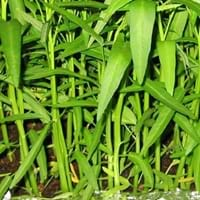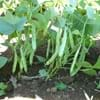Life Span
Perennial
Annual and Perennial
Origin
Mexico, Central America, South America
India
Types
Bigleaf hydrangea, Hortensia, Smooth hydrangea, Oakleaf hydrangea, Annabelle
Not Available
Number of Varieties
Not Available
Habitat
Forest edges, Hillside, Woods
subtropical regions, Tropical regions
USDA Hardiness Zone
11-15
8-15
Habit
Prostrate/Trailing
Spreading
Flower Color
Yellow
White, Lavender
Flower Color Modifier
Bicolor
Not Available
Fruit Color
Red
Green, Reddish Plum
Leaf Color in Spring
Green, Dark Green
Green
Leaf Color in Summer
Green, Dark Green
Green
Leaf Color in Fall
Green, Dark Green
Green
Leaf Color in Winter
Green, Dark Green
Green
Leaf Shape
Oblovate
Long Elliptic
Plant Season
Spring, Summer, Fall
Spring, Summer, Fall, Winter
Sunlight
Full Sun
Full Sun, Partial Sun
Growth Rate
Fast
Very Fast
Type of Soil
Loam, Sand
Clay, Loam, Sand
The pH of Soil
Neutral
Acidic, Neutral, Alkaline
Soil Drainage
Well drained
Poorly Drained
Bloom Time
Indeterminate
Indeterminate
Tolerances
Drought
Wet Site
Where to Plant?
Container, Ground
Container, Ground, Pot
How to Plant?
Seedlings, Stem Planting
Seedlings
Plant Maintenance
Medium
Medium
Watering Requirements
Not Available
Requires regular watering
In Summer
Average Water
Lots of watering
In Spring
Moderate
Moderate
In Winter
Average Water
Average Water
Soil pH
Neutral
Acidic, Neutral, Alkaline
Soil Type
Loam, Sand
Clay, Loam, Sand
Soil Drainage Capacity
Well drained
Poorly Drained
Sun Exposure
Full Sun
Full Sun, Partial Sun
Pruning
Remove damaged leaves, Remove dead branches, Remove dead leaves
Remove damaged leaves, Remove dead branches, Remove dead leaves
Fertilizers
All-Purpose Liquid Fertilizer
All-Purpose Liquid Fertilizer
Pests and Diseases
Red blotch
Bacterial leaf spot, Damping-off, Root rot
Plant Tolerance
Drought
Drought
Flower Petal Number
Single
Single
Fragrant Bark/Stem
Yes
No
Foliage Texture
Medium
Medium
Foliage Sheen
Matte
Matte
Evergreen
Semi-Evergreen
No
Attracts
Butterflies
Birds, Hens
Allergy
Chest tightness, Diarrhea, Dizziness, Nausea, Vomiting
Not Available
Aesthetic Uses
Not Available
Farmland
Beauty Benefits
Not Available
Not Available
Edible Uses
Not Available
Yes
Environmental Uses
Air purification
Air purification
Medicinal Uses
Fever, Kidney problems, Urinary tract problems
Anti-ageing Benefits, Antidiabetic, Reduces toothache, Skin Diseases
Part of Plant Used
Flowers, Root
Leaves, Shoots, Stem
Other Uses
Not Available
Used in curries, soups, stews
Used As Indoor Plant
Not Available
Sometimes
Used As Outdoor Plant
Yes
Yes
Garden Design
Container, Edible, Hanging Basket, Herb / Vegetable
Edible, Herb / Vegetable, Tropical, Water Gardens
Botanical Name
LYCOPERSICON esculentum 'Siberian'
IPOMOEA aquatica
Common Name
Siberian Tomato
Swamp Cabbage, Swamp Morning Glory, Water Spinach
In Hindi
Hydrangea
Water Spinach
In German
Hortensie
Wasser-Spinat
In French
Hortensia
Épinards d'eau
In Spanish
Hortensia
La espinaca de agua
In Greek
υδραγεία
Σπανάκι νερό
In Portuguese
Hortênsia
Espinafre de água
In Polish
Hortensja
Szpinak wodny
In Latin
Hibiscus
Water Spinach
Phylum
Not Available
Spermatophyta
Class
Not Available
Magnoliopsida
Order
Not Available
Solanales
Family
Solanaceae
Convolvulaceae
Genus
Not Available
Ipomoea
Clade
Not Available
Angiosperms, Asterids, Eudicots
Tribe
Not Available
Ipomoeeae
Subfamily
Not Available
Not Available
Number of Species
Not Available
Properties of Siberian Tomato and Water Spinach
Wondering what are the properties of Siberian Tomato and Water Spinach? We provide you with everything About Siberian Tomato and Water Spinach. Siberian Tomato doesn't have thorns and Water Spinach doesn't have thorns. Also Siberian Tomato does not have fragrant flowers. Siberian Tomato has allergic reactions like Chest tightness, Diarrhea, Dizziness, Nausea and Vomiting and Water Spinach has allergic reactions like Chest tightness, Diarrhea, Dizziness, Nausea and Vomiting. Compare all the properties and characteristics of these two plants. Find out which of these plant can be used as indoor plant. If you are interested to decorate your house and garden, find out aesthetic uses, compare them and select the plant which will beautify your surrounding. Along with beautification, try comparing medicinal and edible uses of Siberian Tomato and Water Spinach and you can choose the plant having best and most benefits.
Season and Care of Siberian Tomato and Water Spinach
Season and care of Siberian Tomato and Water Spinach is important to know. While considering everything about Siberian Tomato and Water Spinach Care, growing season is an essential factor. Siberian Tomato season is Spring, Summer and Fall and Water Spinach season is Spring, Summer and Fall. The type of soil for Siberian Tomato is Loam, Sand and for Water Spinach is Clay, Loam, Sand while the PH of soil for Siberian Tomato is Neutral and for Water Spinach is Acidic, Neutral, Alkaline.
Siberian Tomato and Water Spinach Physical Information
Siberian Tomato and Water Spinach physical information is very important for comparison. Siberian Tomato height is 30.50 cm and width 60.00 cm whereas Water Spinach height is 12.70 cm and width 610.00 cm. The color specification of Siberian Tomato and Water Spinach are as follows:
Siberian Tomato flower color: Yellow
Siberian Tomato leaf color: Green and Dark Green
Water Spinach flower color: White and Lavender
- Water Spinach leaf color: Green
Care of Siberian Tomato and Water Spinach
Care of Siberian Tomato and Water Spinach include pruning, fertilizers, watering etc. Siberian Tomato pruning is done Remove damaged leaves, Remove dead branches and Remove dead leaves and Water Spinach pruning is done Remove damaged leaves, Remove dead branches and Remove dead leaves. In summer Siberian Tomato needs Average Water and in winter, it needs Average Water. Whereas, in summer Water Spinach needs Lots of watering and in winter, it needs Average Water.


